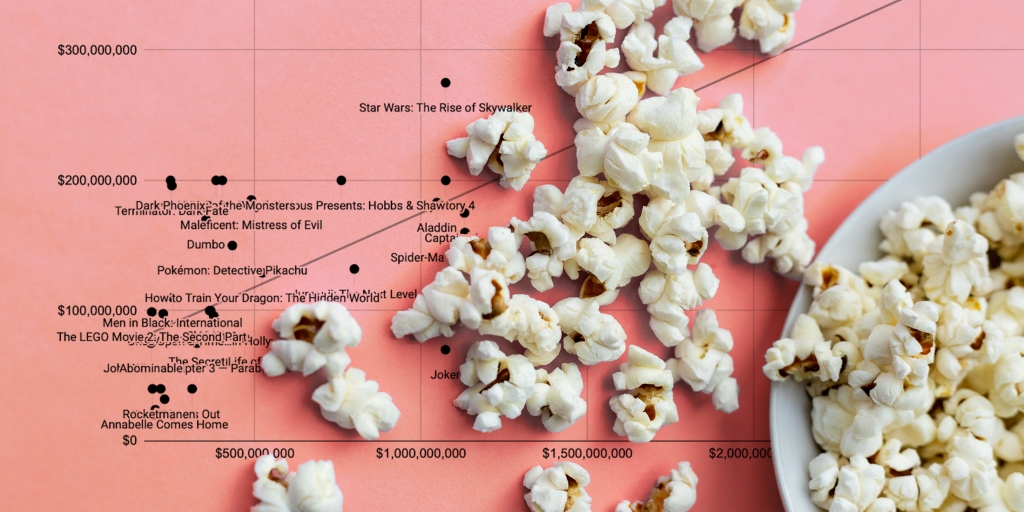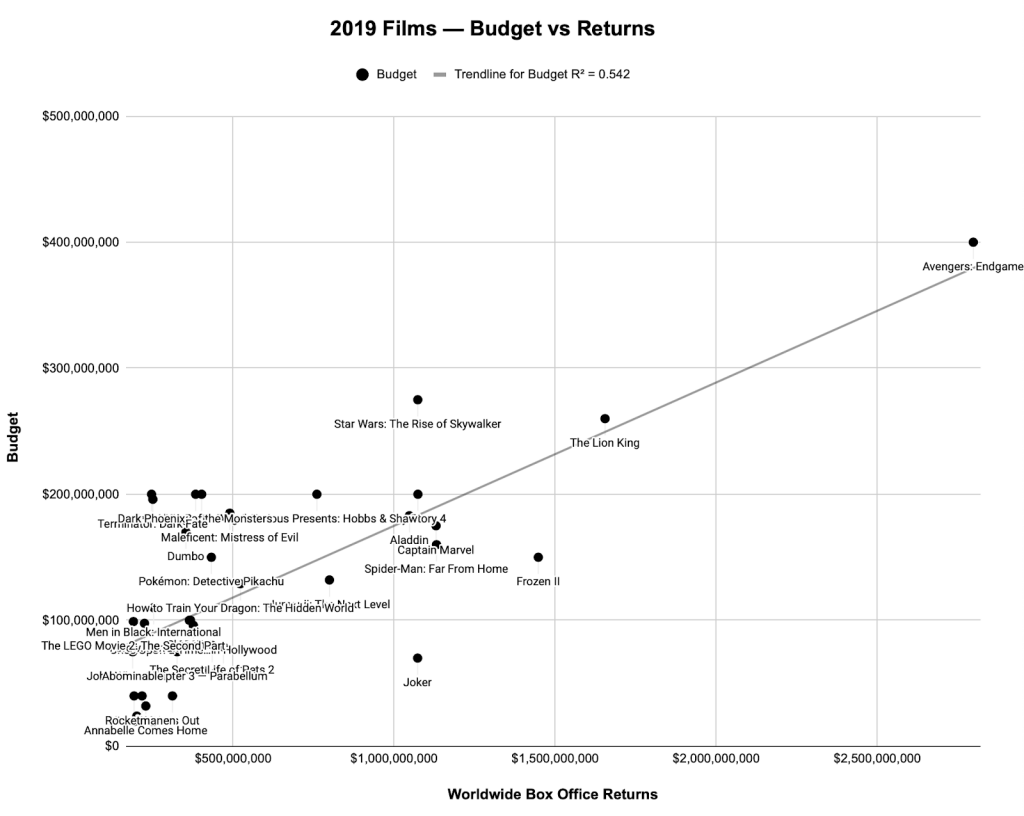This article is brought to you by Datawrapper, a data visualization tool for creating charts, maps, and tables. Learn more.
Does a higher budget make a movie more successful?
Only very expensive movies fail occasionally – *extremely* expensive ones don’t.

Hi, this is Lisa. I’m responsible for the blog and general communication at Datawrapper. And I like movies.
A few weeks ago I read an article called Why Content is King by Nathan Baschez (it’s a good article). One of its first theses is that investing more money in projects leads to more success. “We see that the most successful organizations also tend to spend the most in absolute terms.”
Nathan shows the following scatter plot of the 50 top-grossing movies in 2019 to make his point. “There’s a slight linear correlation between budget and returns, but more importantly, none of these films cost less than $20m, and the average film cost $129m to make.”

But does it make his point? It doesn’t show us that a high budget led to a top-grossing movie – only that top-grossing movies had a high budget.
Does a high budget lead to success?
So let’s focus on the budgets. Here’s the same chart showing all 2019 movies with a budget of more than $20m:
Throwing money on a movie doesn’t necessarily make it more successful. Expensive, unsuccessful movies do exist. The Irishman was one of them: The Numbers and BoxOfficeMojo both put the worldwide gross below $1m. Wikipedia states $8m as the box office revenue – but that’s still way below the $160m budget (a budget higher than the one from Frozen II). Cats, too, was a box-office bomb, only making 75ct for each Dollar invested in it.
We know of 92 movies that got released in 2019 with a >$20m budget. 22 of them flopped. Since 2000, every fourth >$20m movie lost money. (And there’s no trend indicating that this will change in the future.)
What makes it worse: We only know (and can visualize) the production budget of a movie, not the total budget including distribution and marketing. X-Men: Dark Phoenix, for example, grossed the production budget, but suffered an estimated loss of $79–133m. “For a small $20 million film, the promotional budget can be higher than the production budget,” Gizmodo reports.
But when we ask Nathan’s question a bit differently, we might get somewhere:
Does a higher budget prevent failure?
Yes! Look at all these not-failing, expensive movies (and again, keep in mind that we don’t know their promotional costs):
Really, really expensive movies have always grossed their production budget. They’re basically too big to fail. Only 68 >$200m budget movies exist – with Avengers, Pirates of the Caribbean, and Star Wars leading the (not inflation-adjusted) list – and none of them seemed to be a bad idea for their investors.
The lower the budget, the likelier failure becomes. But that’s only true for >$15m movies. There’s an opposite trend at the bottom.
These <$15m, “low-budget” movies are not to be underestimated. If they’re successful, the return on investment can be huge. My Big Fat Greek Wedding, Parasite, Black Swan, Slumdog Millionaire, or Saw II all cost less than $15m in production and grossed more than twenty times that – compared to e.g. Avengers‘ or Lion King‘s 6-7x return.
The absolute return of a successful movie is bigger, the higher its production cost. But it’s hard to beat the relative return (per dollar invested) of a cheap crowd pleaser.
They’re just really hard to plan for.
Thanks for reading! I hope I didn’t make you yearn for watching movies in proper cinemas too much. As always, feel free to write to me at lisa@datawrapper.de with comments, questions, feedback. We’ll see you next week.




Comments